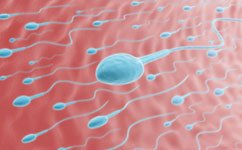
Big sperm don't always win the race
When females mate with more than one male, each one's sperm has to compete to get to her eggs. Until now, researchers had thought the fastest sperm would dominate. But in a new study, published in Evolution, a team of scientists have found that it is much more complicated than that.
'If you compare species with little sperm competition, like humans, with a species where there is a lot of sperm competition, like Bonobos, then the bonobos tend to have faster, bigger sperm,' says Dr John Fitzpatrick of the University of Manchester, lead author on the paper. 'But if you look within a species, you typically don't see this relationship where bigger sperm are faster.' Instead, the team found that bigger sperm – those with longer tails, called flagellum –were only the fastest in species with external fertilisation, such as fish or mussels. In animals with internal fertilisation, like emu, bigger sperm were often the slowest.
To analyse how fast the sperm were depending on their size, the researchers took video recordings of sperm swimming and then broke them down frame by frame using high speed cameras. They then deconstructed these frames into a stack of still images which could be entered into a computer programme to focus on a single sperm at a time. They then used computer assisted sperm analysis – software also used in human fertilisation clinics – to assess sperm quality. 'In sperm with longer flagellum there's more thrusting force to move sperm forward, and there we found clear results. A shorter head and bigger tail means you swim faster if you're an externally fertilizing species, but if you have a bigger head and a smaller tail it seemed you swam faster if you were internally fertilizing,' Fitzpatrick says.
The researchers think that the reason bigger sperm swim slower in some internally fertilizing species is because they may be using a different strategy of moving slower but swimming for longer periods. 'In externally fertilizing species you need to be fast as sperm don't live long outside of the body, so they have to get to the egg quickly, whereas in internally fertilising species the sperm can hang around for longer. We think going slower is the sperm's way of trying to conserve energy and taking its time to reach an egg,' explains Fitzpatrick. 'This may reflect the different ways that selection acts to make a successful sperm in internally versus externally fertilizing species. '
